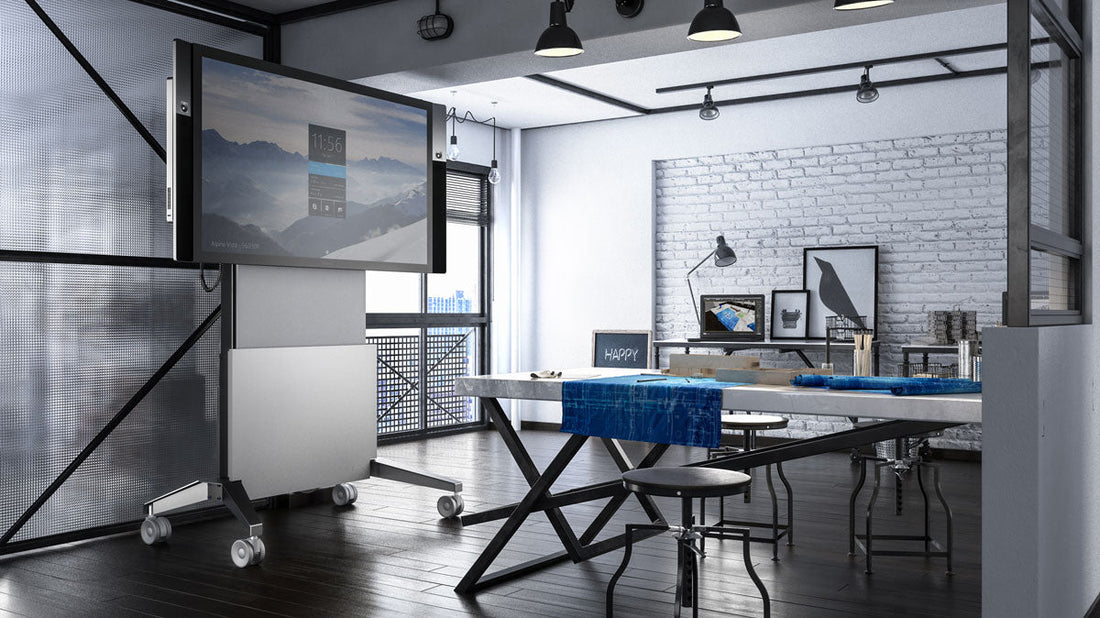You’ve finally picked the perfect screen – it fits your budget, has all the features you need, and looks great. But now comes the harder part: finding the right TV cart to match. With so many options on the market, it can feel overwhelming. And getting it wrong doesn’t just mean wasted money – it can result in instability, poor user experience, and even safety issues.
How do you choose something that’s safe, compatible, and built to last?
Here are five common mistakes to avoid when purchasing a mobile TV cart:
1. Not Checking the Weight Rating
One of the most common oversights is ignoring the weight capacity. Every cart has a maximum load rating, and if your display is too heavy, you could be facing a tipping hazard or structural failure.
Always cross-check the cart’s load capacity with your screen’s weight – and if it’s going into a school, meeting room, or public space, consider carts that meet UL safety certification standards. These have been independently tested to ensure they remain stable, even in busy or high-traffic environments.

2. Skipping VESA Compatibility
The back of your screen will have four threaded holes for mounting, arranged in a specific pattern – this is known as the VESA pattern. If your cart doesn’t match your TV’s VESA spec, you may need additional brackets or find the screen simply can’t be mounted.
Common VESA patterns range from 200x200mm up to 600x400mm, but some devices – like Cisco Webex Boards – use unique mounting layouts. If you're working with enterprise gear, make sure your cart is designed for it. For example, Salamander Designs offers carts that are officially compatible with Cisco Webex Board Pro.
3. Assuming One Size Fits All
TV carts aren’t one-size-fits-all solutions. Different environments require different features – what works in a boardroom may fall short in a classroom or training centre.
A commercial office may need a sleek finish and hidden cable routing, while education settings demand durability and ease of movement. Healthcare environments often call for antimicrobial materials and medical-grade finishes. Know your environment and choose a cart that’s purpose-built – it’ll last longer and perform better.

4. Overlooking Stability and Adjustability
Mobility is a key benefit of a TV cart – but not all carts move smoothly, and not all stay steady once in place. Wobbly frames or undersized wheels are red flags, especially if the cart will be moved often or used around children.
Look for carts with a wide, stable base, lockable 75mm castors, and quality materials. Don’t forget about screen height – adjustable mounting brackets make the cart more versatile for users of different heights and applications.
5. Going for the Cheapest Option
Budget is always a factor, but opting for the lowest-cost option can be a false economy. Lightweight materials, poor welds, and flimsy joints often lead to carts that wobble, wear out quickly, or simply fail under regular use.
For frequent or long-term use, invest in a cart with robust steel construction, reinforced brackets, and a reputable brand name. A little extra upfront often means fewer headaches (and fewer replacements) down the track.
A Better Viewing Experience Starts with the Right Cart
A well-designed TV cart enhances collaboration, improves safety, and keeps your tech investment protected. Whether it’s for a training room, classroom, or mobile AV setup, avoid these pitfalls to get the most value from your purchase.
Need help choosing the right cart? Talk to our team for tailored advice.









